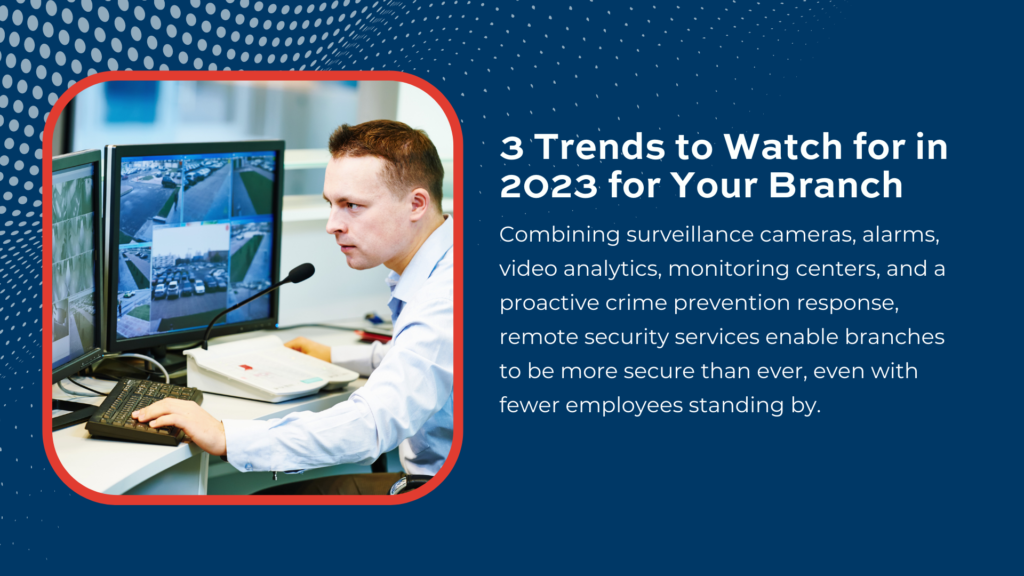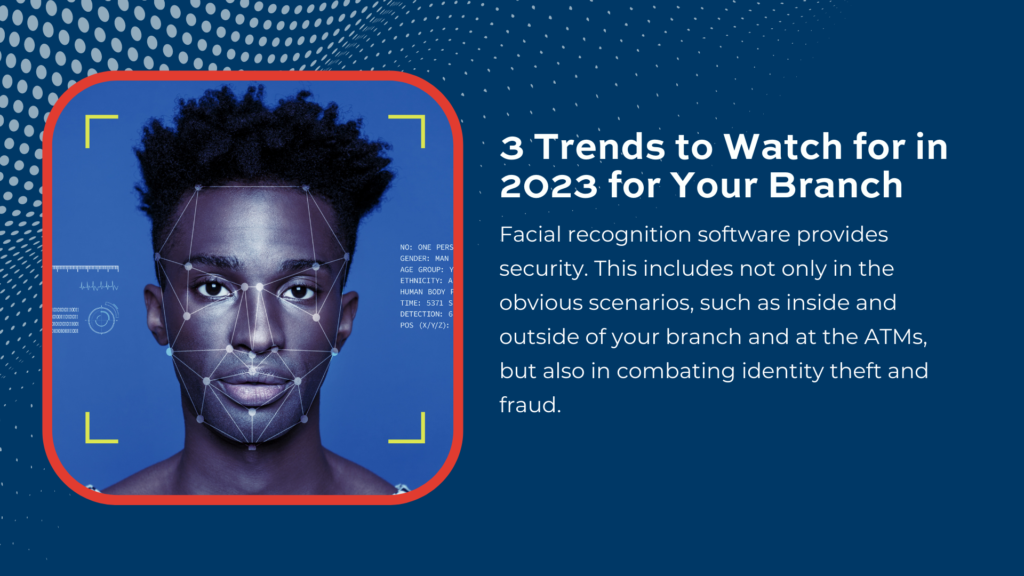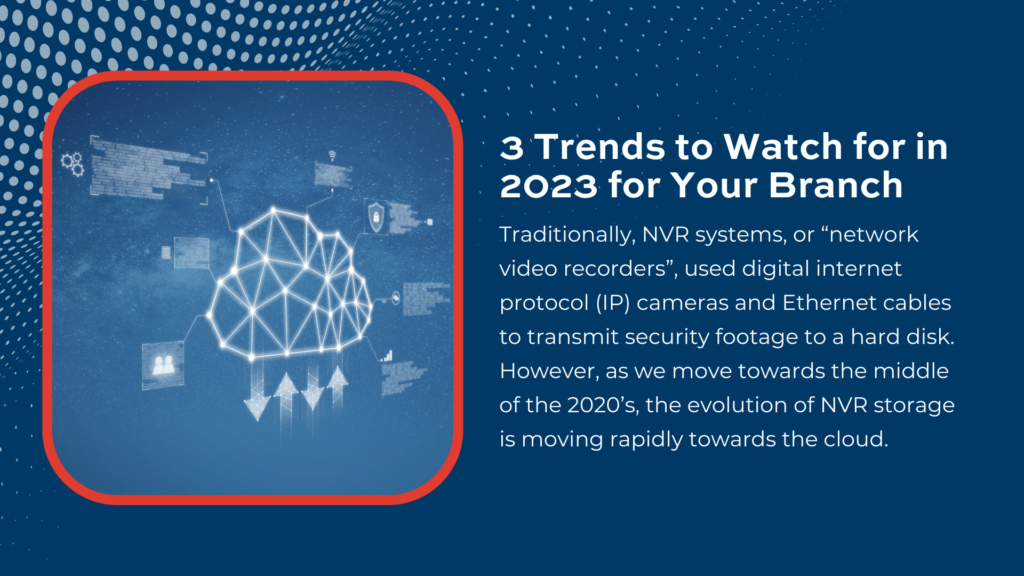Electronic security moves at the speed of light (sometimes literally, in some aspects)! And advances in electronic branch security aren’t the only new arrivals; it may be hard to believe, but it’s going to be 2023 in just 14 short weeks, as of the time of this writing.
Here at Wittenbach, here are some of the technologies we believe are most likely to continue expanding well into 2023 and beyond:
Remote Security Solutions
Electronic security is always on our mind here at Wittenbach, and for good reason: As consumers want to conduct banking transactions virtually increasingly more, banks and credit unions have less staffing, and, ultimately, less security personnel present in each branch.
The secret to keeping branches secure with less of a physical footprint inside is with remote security solutions. Combining surveillance cameras, alarms, video analytics, monitoring centers, and a proactive crime prevention response, remote security services enable branches to be more secure than ever, even with fewer employees standing by.
And electronic security doesn’t stop at banks and credit unions. Storage spaces, retail stores, parking lots, college campuses, shared living spaces, and other locations can benefit greatly from enabling remote security products and integrated services.
For more on remote security solutions from Wittenbach, click here.
Facial Recognition Software
There are several aspects to facial recognition software that make it a desirable option for banking branches (and hence, one of the reasons we believe it will be one of the fastest-growing newly-adopted technologies in 2023). First, facial recognition software provides security. This includes not only in the obvious scenarios, such as inside and outside of your branch and at the ATMs, but also in combating identity theft and fraud.
Secondly, facial recognition software is convenient and easy to use for the consumer. Faces can be used to provide secure authentication and access to banking applications without needing account numbers, routing numbers, usernames, or passwords. The average facial recognition-based login takes less than a second, as opposed to traditional logins, which can take 30 seconds or more. This encourages end users to interact with your branch increasingly more virtually.
For more on facial recognition software options from Wittenbach, click here.
Cloud-Based NVR Systems
Traditionally, NVR systems, or “network video recorders”, used digital internet protocol (IP) cameras and Ethernet cables to transmit security footage to a hard disk. However, as we move towards the middle of the 2020’s, the evolution of NVR storage is moving rapidly towards the cloud.
The cloud offers numerous advantages, but one huge benefit is that the security footage can be stored off-site, preventing intruders from gaining access to the server. Another is that footage from many cameras can be processed and safely stored simultaneously – it is not uncommon for branches to be running 64 NVR cameras or more at the same time – without concerns about storage limitations.
As a partner of renowned electronic security manufacturer Verint, Wittenbach offers a series of NVR systems such as the leading-edge Verint EdgeVR 300 that can accommodate up to 64 cameras at once, offering scalability to your branch’s digital transformation.
For more on cloud-based NVR systems from Wittenbach, click here.
Bottom Line
Electronic security is one of Wittenbach’s four foundational pillars, and as both experts and partners with industry leaders, we recognize what it takes to keep your branch, business, or campus safe. By using state-of-the-art Verint IP security cameras, reliable entry systems, and watchful remote monitoring services like Security Central, you can establish several layers of security in and around your building—offering priceless peace of mind. Contact Wittenbach to learn more about each of these contributing factors to a successful remote security solution suite!




